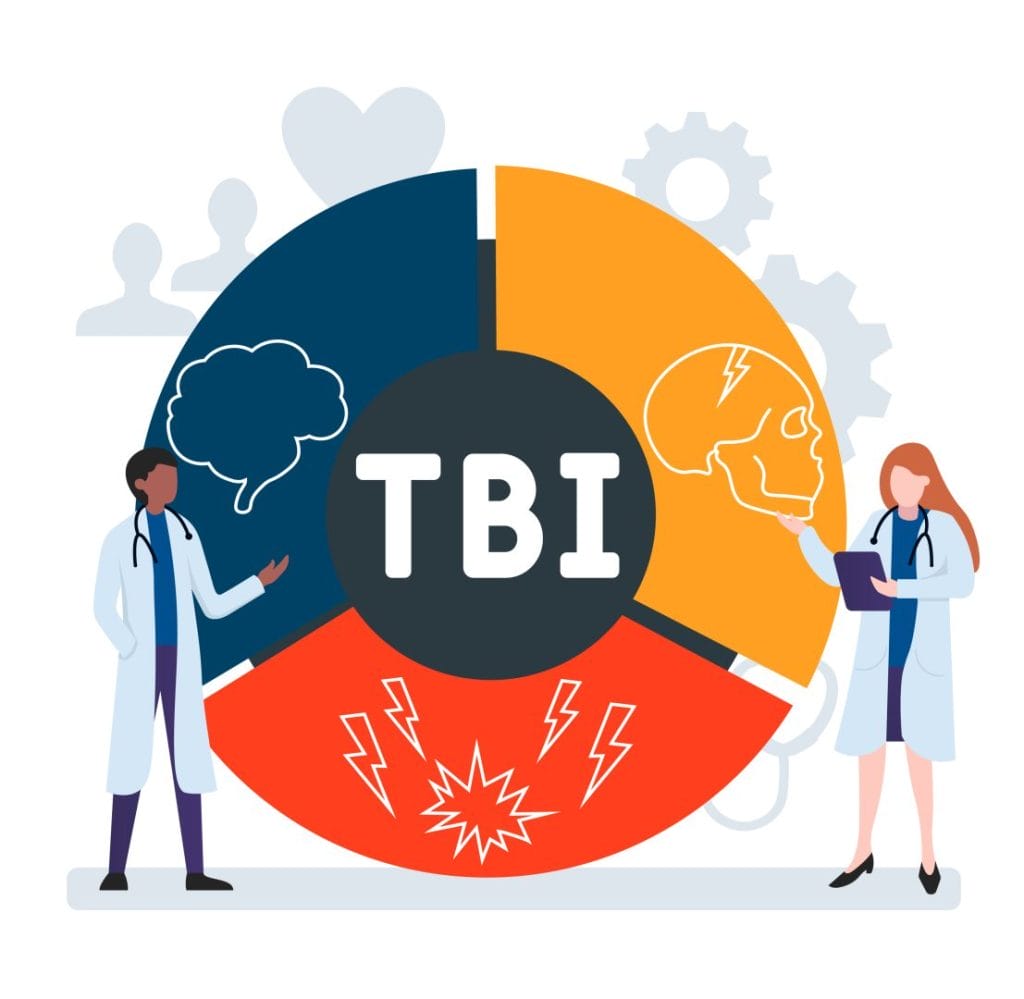Shining a Light on TBI Recovery

Introduction: The Hidden Toll of Traumatic Brain Injury
Each year, millions of people suffer from traumatic brain injuries (TBI)—ranging from sports concussions to car accidents and military blast exposures. While some recover quickly, many experience lingering cognitive, emotional, and neurological symptoms for months or years.
Emerging research suggests a promising, non-invasive therapy: transcranial photobiomodulation (tPBM) using near-infrared light at 810 nm.
What Happens to the Brain After TBI?
Following a brain injury, damage doesn’t stop at the initial impact. A cascade of secondary effects unfolds in the hours and days afterward, including:
- Mitochondrial failure
- Increased oxidative stress
- Inflammation and microglial activation
- Reduced cerebral blood flow
These cellular dysfunctions contribute to long-term symptoms like memory problems, headaches, depression, and fatigue.
Mitochondrial Dysfunction: A Core Culprit
One of the most significant consequences of TBI is mitochondrial dysfunction. When mitochondria are damaged, neurons lose energy, leading to impaired signaling, poor repair, and even cell death.
Photobiomodulation addresses this issue at the source by:
- Stimulating mitochondrial repair
- Boosting ATP production
- Reducing reactive oxygen species (ROS)
- Modulating inflammation
Photobiomodulation for Brain Health
tPBM involves delivering red or near-infrared light to the brain through the scalp and skull. The 810 nm wavelength is especially effective because it can:
- Penetrate the skull and reach cortical and subcortical regions
- Activate cytochrome c oxidase, the enzyme critical to mitochondrial function
- Improve neurovascular coupling, enhancing blood flow to damaged areas
These effects create a more supportive environment for neural recovery and neuroplasticity.
The Unique Power of 810 nm Light
Among all wavelengths studied for brain therapy, 810 nm is the gold standard. It offers the best balance of penetration depth and cellular response. Studies show it can reach 2–3 cm into brain tissue, especially in frontal regions—making it ideal for cognitive and emotional rehabilitation.
Key benefits of 810 nm tPBM:
- Supports neuronal survival
- Reduces neuroinflammation
- Enhances mood and cognition
- Promotes brain-derived neurotrophic factor (BDNF)
Research Spotlight: PBM for TBI Recovery
A landmark review titled Transcranial Low-Level Laser (Light) Therapy for Brain Injury details how 810 nm light applied to the forehead improved neurological outcomes in both animal and human studies【source: PMC5180077】
In human case reports and small trials, tPBM has been associated with:
- Enhanced executive function
- Improved mood and memory
- Faster recovery timelines
- Reduced post-concussion symptoms
“tPBM may improve recovery after TBI by restoring cellular metabolism and reducing secondary damage.”
Regen Pod’s Role in Neurorehabilitation
Regen Pod’s Stim-Cell® technology is designed to deliver the precise parameters needed for safe, effective brain therapy:
- 810 nm wavelength for optimal penetration
- Pulsing protocols tuned to enhance cortical responsiveness
- Targeted, whole-head exposure for consistent neurocoverage
Whether for mild TBI, chronic post-concussion syndrome, or cognitive fog, Regen Pod brings the latest light science to the forefront of brain recovery.
Regen Pod empowers neurorepair through light, supporting energy, clarity, and resilience where it matters most.
Traumatic brain injuries can change lives—but with the right tools, recovery is possible. Our photobiomodulation using 810 nm light offers a safe, research-backed approach to healing the brain from the inside out.
References:
- Hamblin MR, Transcranial Low-Level Laser (Light) Therapy for Brain Injury, PMC5180077
- Naeser MA et al., Improved cognitive function after transcranial, red/near-infrared light-emitting diode treatments in chronic, mild traumatic brain injury, cited in the above review PMID: 21182447


